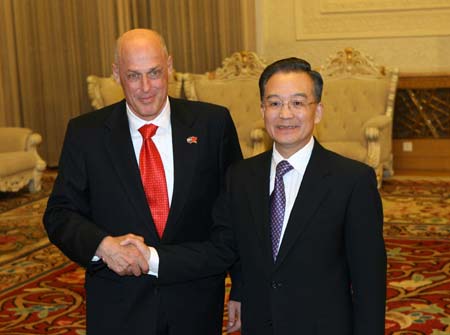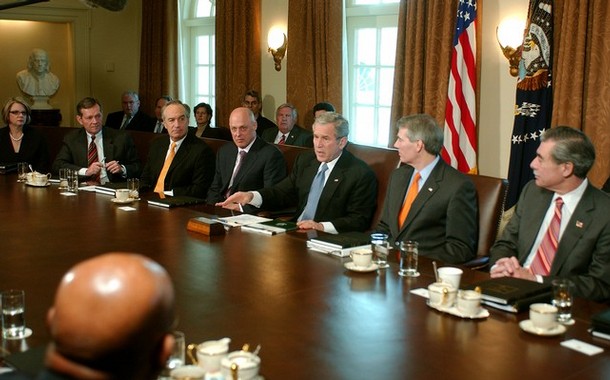 Sec Treas Henry Paulson recently published an essay in CFR's Foreign Affairs magazine, which discusses leveraging trade as a platform to strengthen the SinoAmerican relationship. He writes hopeful that the next administration will engage China in a way that is responsive to its “twin priorities” of “territorial integrity and economic growth.”
Sec Treas Henry Paulson recently published an essay in CFR's Foreign Affairs magazine, which discusses leveraging trade as a platform to strengthen the SinoAmerican relationship. He writes hopeful that the next administration will engage China in a way that is responsive to its “twin priorities” of “territorial integrity and economic growth.”
Paulson's theory revolves around the cornerstone that successful partnership will be better facilitated through pursuing issues and activities of shared interests:
The prosperity of both nations depends on the ability of each to achieve balanced economic growth on stable and vibrant trade and financial regimes, on diverse and dependable energy sources, and on sustainable progress that protects human health and the environment.
Paulson adds that the US’ engagement strategy is best served by working to improve understanding of China. Specifically, China's ongoing challenge of striking a balance between its ambitions to modernize/reform, and the stability of its nation. Being clear on Beijing's tendency to view its “international interactions primarily through an economic lens.”
Americans who worry that China might overtake the United States are worrying about the wrong thing. They should instead be concerned that Beijing may not make key reforms or that it will face significant economic difficulties down the road. Serious troubles in China's economy could threaten the stability of the US and global economies.
As the US does its best to manage current relations with China, it will be met with challenges when trying to steer the direction of its future. Paulson spells this out by saying that Washington needs to “understand China's perception of its self-interest, identify opportunities to persuade China that its interests and those of the United States often are the same, and narrow real differences whenever possible.”
As a means for a solution, Paulson advocates increasing emphasis on the SED, which has thus far proven successful as a communication channel between the two countries. Part of the reason for SED's success is that it is the first of its kind: an ongoing dialogue between the two that records and publicizes commitments made during sessions, which serves as a force function to hold each party accountable for its actions and promises.
Another unprecedented aspect of the SED is that it works to ensure that all levels of each government have direct interaction. There is cabinet-level representation from all ministries with responsibilities for various economic issues from both countries. Chinese ministers and US cabinet secretaries are involved in each session. Subject matter experts are given the opportunity to speak before high-level heads to provide accurate briefs and information to support the decision-making process. The discussions are fairly unstructured. All these aspects of the SED play into China's political decision-making process, which follows a team effort where its players are national ministries and officials.
 An example that illustrates the success of the SED in facilitating breakthrough agreements is the recent conclusion of a bilateral air services agreement. Paulson explains that the agreement was originally bottlenecked by China's focus on developing its domestic aviation through limiting international aviation efforts. The SED provided a tabletop on which he was able to show Beijing that more access = more people = more goods. As a result, US passenger flights to/from China will enjoy increasing in frequency by more than double by 2012.
An example that illustrates the success of the SED in facilitating breakthrough agreements is the recent conclusion of a bilateral air services agreement. Paulson explains that the agreement was originally bottlenecked by China's focus on developing its domestic aviation through limiting international aviation efforts. The SED provided a tabletop on which he was able to show Beijing that more access = more people = more goods. As a result, US passenger flights to/from China will enjoy increasing in frequency by more than double by 2012.
As the US works to further bridge partnership activities with China, Paulson encourages the country to re-package its agenda so that China favorably addresses its priorities. In doing so, he asserts that the Washington must work with Beijing to develop its financial sector in order to reduce personal savings rates/boost personal consumption, and find flexibility in its prices and exchange rate. The growing surplus of an aging nation has forced China to turn to issue large quantities of RMB to quell it from appreciating too rapidly, which, in turn, has prompted inflation, exacerbating an already present issue of disparity of wealth between metropolitan cities and rural areas. If the US plays its cards right, this could be its “in,” allowing it to press on the following: